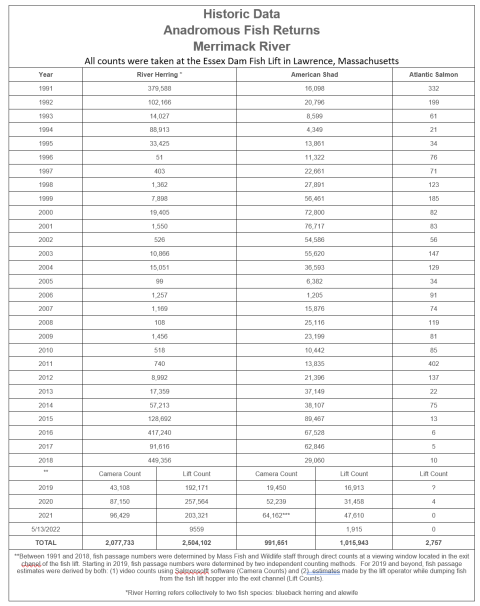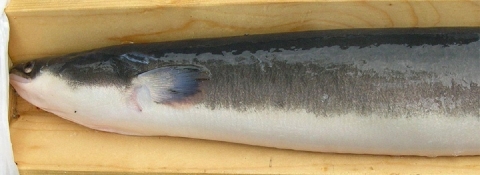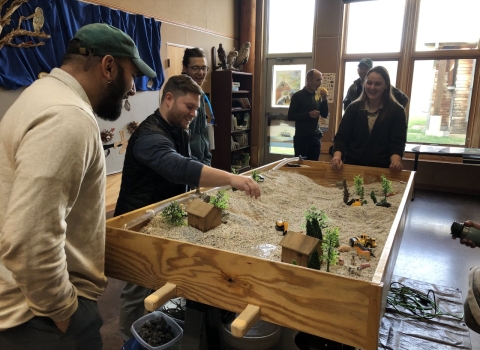What We Do
The Central New England FWCO works closely with the States of Massachusetts and New Hampshire to assess the status and improve habitat for migratory fish; most of our work occurs in the Merrimack River basin, which extends from the White Mountain region of New Hampshire to east-central Massachusetts.
- We partner with the Atlantic States Marine Fisheries Commission to assess the status and health of migratory fish and make recommendations for their protection, restoration and harvest.
- We collaborate on relicensing hydroelectric projects to improve access to historic spawning areas for migratory fish and to ensure compliance with Federal Energy Regulatory Commission (FERC) environmental requirements.
- We restore aquatic connectivity by replacing undersized culverts, dam removals and the installation of fishways to ensure passage and enhance flood resiliency.
Our goal is to protect and restore migratory and resident fish species and their habitat in the rivers of New Hampshire, Massachusetts, Rhode Island, Southern Maine and Southeastern New York.
Our Organization
Our Species
Our priority fish species include river herring (blueback herring and alewife), American shad, American eel, sea lamprey, and brook trout, however, all migratory and resident aquatic species benefit from the work conducted by the Central New England FWCO.
Projects and Research
Across the landscape, undersized, aging and improperly placed road-stream crossings create barriers in our rivers, streams, and tidal wetlands. These structures fragment aquatic habitat and prevent or greatly reduce the ability of aquatic species to move freely to migrate, feed, and reproduce. These poorly designed structures are also more prone to clogging, causing flooding, and washing out...
Get Involved
Whether you want to further conservation, learn more about nature or share your love of the outdoors, you’ve come to the right place. The Central New England FWCO provides many opportunities for you to help your community and fish and wildlife by doing what you love.
We partner with volunteers, youth groups, landowners, neighbors and residents of both urban and rural communities to make a lasting difference. There are opportunities for everyone to get involved!
Volunteers: Gain new experiences and meet new people while helping to advance fish and aquatic conservation.
Friends: Join neighbors in helping hatcheries work effectively in our communities.
Local Groups: Find out how communities can work with hatcheries to conserve our shared natural resources.
Youth: Explore paid and unpaid opportunities to learn and develop leadership skills.








